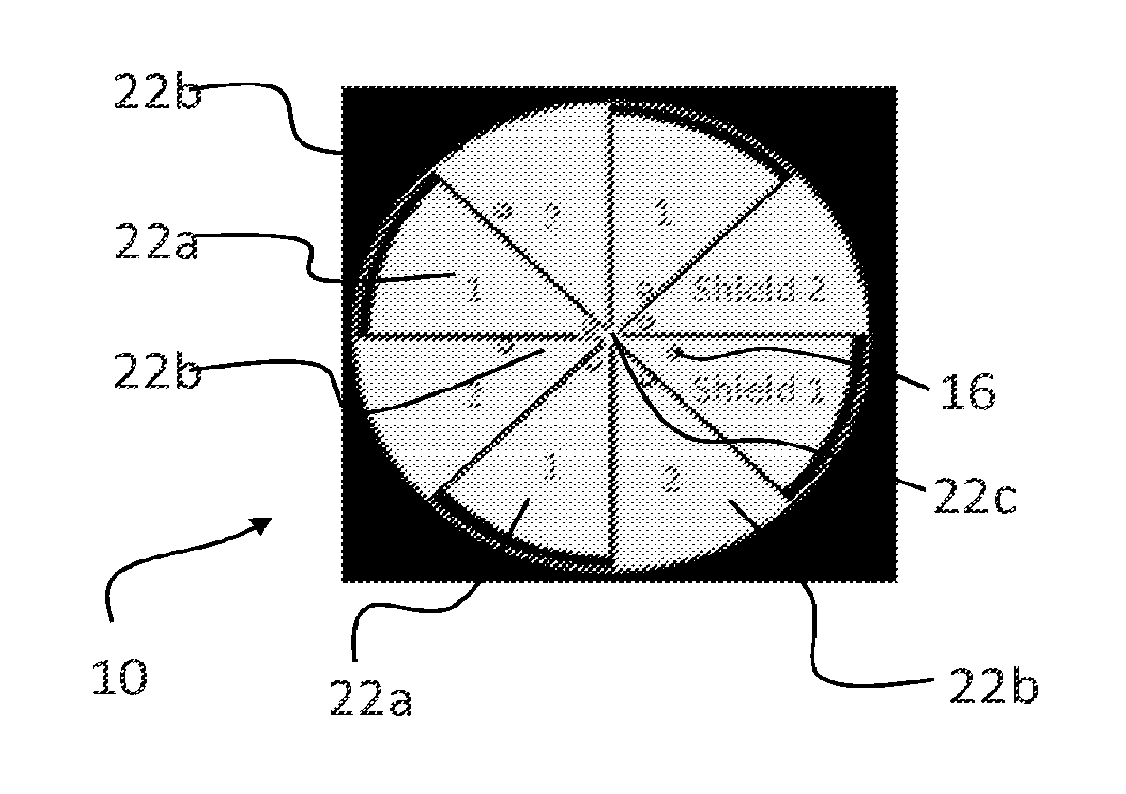Electrical wearable capacitive biosensor and noise artifact suppression method
a biosensor and wearable technology, applied in the field of biosensors, can solve the problems of skin irritation and discomfort, clinical testing system drawbacks, rare or transient events that are often missed in clinical tests, etc., and achieve the effect of suppressing nois
- Summary
- Abstract
- Description
- Claims
- Application Information
AI Technical Summary
Benefits of technology
Problems solved by technology
Method used
Image
Examples
Embodiment Construction
[0017]A preferred embodiment electrical wearable bio-sensor of the invention includes a plurality of physically-interleaved capacitive channels. The separate channels have different amounts of parasitic input capacitance that create channel specific outputs that depend upon input coupling capacitance. Differences in the output channels are processed with a digital reconstruction filter to re-create the original biopotential with attenuated motion artifacts. Preferred embodiments provide non-contact sensors, i.e., sensors that can be carried on clothing or worn on body parts with patches or bands and without requiring direct contact with the skin.
[0018]A preferred sensor includes a plurality of interleaved symmetrical channel electrodes. Two channels each include a plurality of shaped electrodes that are electrically isolated from each other but electrically connected to each in a signal layer. A particular preferred embodiment includes a plurality of pie shaped electrodes. First cha...
PUM
 Login to View More
Login to View More Abstract
Description
Claims
Application Information
 Login to View More
Login to View More - R&D
- Intellectual Property
- Life Sciences
- Materials
- Tech Scout
- Unparalleled Data Quality
- Higher Quality Content
- 60% Fewer Hallucinations
Browse by: Latest US Patents, China's latest patents, Technical Efficacy Thesaurus, Application Domain, Technology Topic, Popular Technical Reports.
© 2025 PatSnap. All rights reserved.Legal|Privacy policy|Modern Slavery Act Transparency Statement|Sitemap|About US| Contact US: help@patsnap.com



